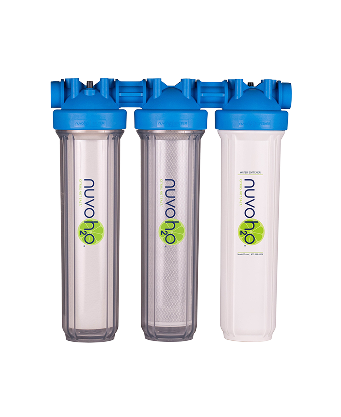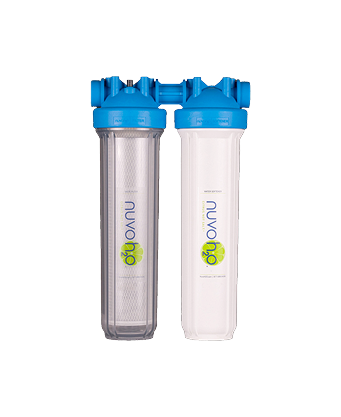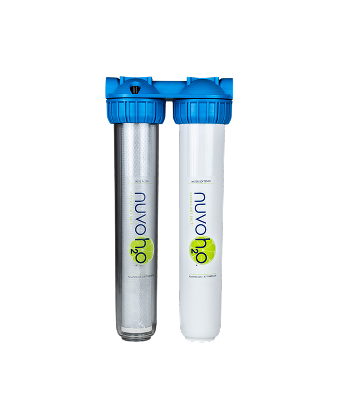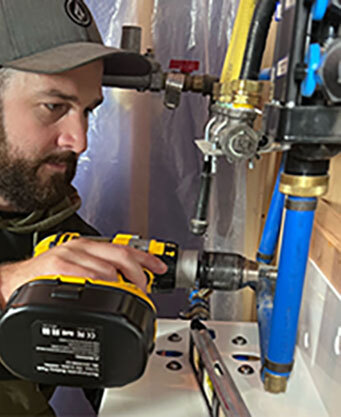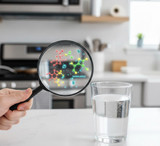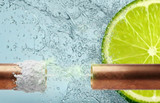
Is Your Water a Scary Color?
Posted by Tait Washburn on 22nd Oct 2021
When we turn on the sink we expect our water to be clear, and nothing is scarier than water that isn’t. When you turn on your shower and the water comes out pink you wouldn’t be blamed if you felt overwhelmed and out of your depth. Discolored water could be anything from a simple problem with taste that will solve itself or a serious problem that needs professional attention to fix.
We’ve collected some common colors and causes as a reference guide to make discolored water a little less frightening!
My Water is Brown/Red/Orange!
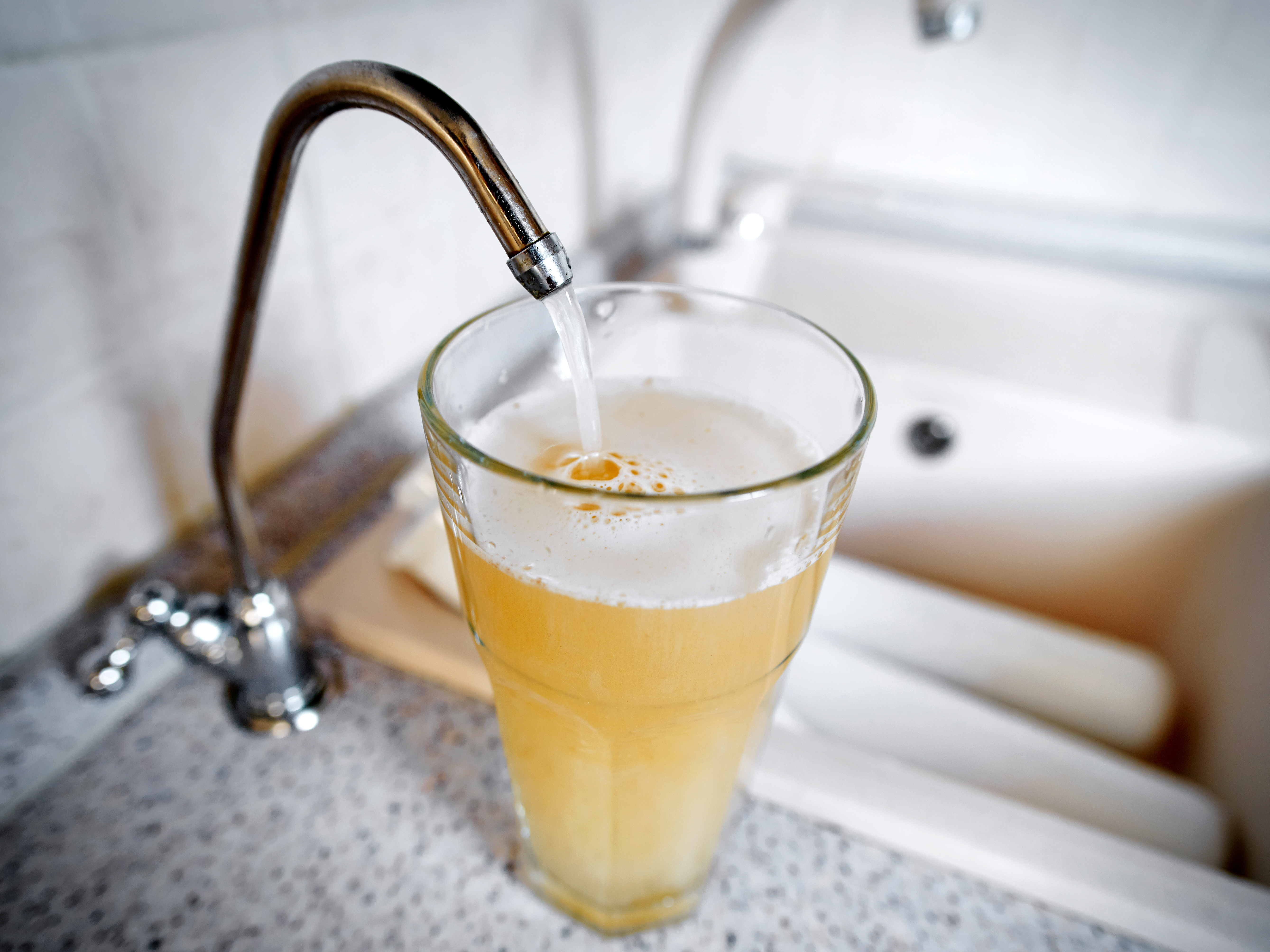
If your water looks like a muddy orange, a red-ish brown, or anything in between, you very likely have a rust problem. The red-ish color is a result of too much iron or manganese in your water and usually is due to old pipes deteriorating with rust and other damage. In fact, the more brown your water is, the more your pipes have oxidized and rusted!
This rusting won’t necessarily affect your health, but it can still be a nuisance. Rusty water can leave red and brown stains in your sink, tub, and clothing. It also leaves a metallic taste in your water and the food you cook in it. If you have rust water, you may have a high amount of iron naturally in your water, but most likely you’ll need a plumber to permanently solve the problem.
If you have a septic tank or have well water, there is a slight chance this is a red algae bloom, so if you can’t find any rust or your pipes are new, you should get your water tested and talk with a professional right away.
My Water is Milky White!
If your water comes out looking like thin milk, there are a few potential causes. While it’s always possible your water has a high concentration of some white contaminant, it’s more likely that it’s just very aerated and not a health concern at all.
Try filling a tall glass with your water and let it sit until you see bubbles rise and dissipate. If the water becomes clear by that point, it’s likely the tap aerator, the mesh cap at the end of the faucet. If the water is still cloudy you will want to take additional steps to get your water tested and treated.
My Water is Pink!
If your water is the color of bubble gum, don’t worry! There isn’t cotton candy in your water, it’s likely due to potassium permanganate. Potassium permanganate is a chemical that many municipal water plants use to treat and protect water systems to remove bacterial growth and help dissolve buildups of trace sediments like manganese or hydrogen sulfide. In all likelihood, you are only seeing this color change because your water provider recently started using this chemical treatment.
Normally you can’t see potassium permanganate, but if your water is pink, try running your water for a few minutes. If the color clears up then it was probably a one-time reaction to the new water treatment. However, if it doesn’t clear up or you get this discoloration again you should contact your water supplier and let them know. They should be able to give you directions on fixing the problem and will be able to take steps to prevent buildups like this in the future.
My Water is Green!
Green water is usually the result of a buildup of algae. Algae grows naturally in water and a very small amount is not a problem, but if it’s become visible there may be a health risk. Usually, this sort of algae buildup happens in still water due to plumbing blockages but can occur in septic tank systems or in well water.
If you have green water and you don’t have a well, you’ll want to call a plumber to look for blockages or other causes. Once the problem is fixed your water should return to normal. If not, or if you have well water, you’ll want to get a plumber to test your water.
My Water is Black!
If the water in your tap is black, you need to call a plumber immediately. Black colored water is most likely caused by mold or a sewage leak, both of which are highly dangerous to your health. A professional is needed to determine the cause, and you should avoid using your tap water at any cost.
What Else Can I Do About It?
Water discoloration can be caused by a litany of things, from a new water source or water treatment to small pipe leaks or water contamination to your water source. If your water is a different color than any listed above, or if you took the steps above and it didn’t fix the problem, there are some other general steps you can take to help identify and fix the issue.
The first thing we always suggest is to check with your local water utility company. Their website might have up-to-date information on current water issues they’re experiencing, new water treatments they are using, etc. You can try the FAQ section for announcements, and they may issue notifications about upcoming work to a main water line in your area or potential changes in the water supply that may cause these issues. You can also call for additional information and to report problems with your water.
The EPA also has a bevy of drinking water resources. You can call their hotline at (800) 426-4791. They have plenty of information on what contaminants your water provider should be removing and which ones they might or might not be monitoring.
Lastly, you can always get your water tested yourself! This is a great way to gain confidence in your water provider or in your own well water and is a great way to provide critical information to plumbers and other water specialists that may be necessary to fix a problem. You can buy water testing kits online or at most plumbing stores. You can check the EPA website for labs that are specifically certified to do drinking water testing in your state.
NuvoH2O is not a plumbing company. We offer the above guide as suggestions, not a diagnosis, and not as definitive answers to your water issues. Everyone’s home water system is different. If you are experiencing any concerns with your drinking water, we suggest you contact a trusted plumber for further advice.
The one place you should be confident in the tap water should be your own home, and nothing does more to shake that confidence than water with a scary color. Taking the time to identify and fix water discoloration is the difference between fear of your water and trust that your home water is safe. So do the research, take the right steps, and drink without fear.

